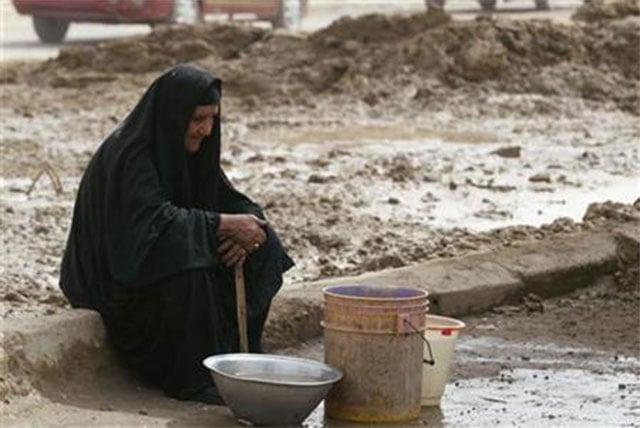Today, Pakistan’s agriculture faces a looming water crisis. While 90% of Pakistan’s water supply is channeled into its agricultural sector, a staggering 50% is wasted due to mismanagement and inefficient irrigation practices. The result is a substantial wastage of water which directly curtails the country’s ability to produce efficient agricultural output, despite its great potential to do so.
To combat this pressing matter, adopting advanced technologies like drip irrigation prove essential. Corporate engagement in such projects has the ability to expedite this process and help Pakistan achieve improved water efficiency, profitability, and sustainable agricultural practices.
A drip irrigation system in Pakistan. – Source: 24 News HD
The Problem: Water Scarcity
Pakistan’s average crop yield is poor, at only 2 metric tons per hectare compared to the global average of 4 metric tons. And water is one of the most significant reasons for this.
Provinces like Sindh rely primarily on irrigated agriculture for their rural economy. But while 77% of Sindh’s agricultural land is irrigated, these limited water resources are not used efficiently. In fact, 60-75% of water is lost either through evaporation or seepage into saline groundwater. As a result of this mismanagement, Sindh becomes victim to scarce water resources, particularly during the pre-monsoon months, and this directly hampers the region’s ability to practice substantive or profitable farming.
In regions like Sindh, outdated water techniques such as flood irrigation not only waste water but also strain existing resources and consequently decrease crop yield. It is no surprise, then, that not much agricultural surplus remains for the country’s export economy.
The Impact: Lost Potential
This, however, does not mean that Pakistan doesn’t enjoy numerous potential for export and economic growth. Being an agro-based economy, agricultural exports play a pivotal role for the country. Several studies indicate great export potential with neighboring countries in the Middle East and Europe, with goods like Rhodes grass becoming more and more popular.
“We can produce serious amounts of export in Pakistan,” says Bill Fidler, the Managing Director at Valley Irrigation Pakistan, an organization that has been actively involved in developing a distribution network for modern irrigation and farming equipment since 1974. Offering a range of irrigation solutions such as center pivot and linear move systems, the organization utilizes motorized drive units and overhead sprinklers to irrigate fields efficiently. Up until now, the company has successfully delivered high-efficiency mechanical move irrigation systems, with 94 center pivot systems already installed and several others in development.
With much experience in the industry and exposure to the Pakistani agricultural landscape, Fidler believes that crucial to optimizing this potential is private sector involvement and collaboration with the Pakistani government. He believes that the untapped potential of Pakistan’s agrarian economy could be a space to fill for private companies seeking to invest in profitable ventures, given the vast economic potential and population involved in agriculture in the country.
The Solution: Mechanizing Agriculture
In Fidler’s eyes, however, this is just the beginning. “In agriculture, everything changes every day – the technology changes, the seeds change…,” and it is precisely this reality that exposes the potential for improvement in Pakistan’s agricultural irrigation.
With most farmlands utilizing inefficient, outdated mechanisms for watering their fields, there is space for developing alternative techniques and successfully adopting newer technologies to maximize yield in the southern farmlands of Pakistan. In this realm, corporations have the capacity to enter this profitable market and import technologies to farmers still making use of traditional practices.
Contractors with large equipment, for example, can help mechanize agricultural output for small farmers by entering the land, adopting this equipment, and proving its utility. Afterward, farmers can be trained to make use of this equipment efficiently and potentially even cooperate with neighboring farmlands to further optimize their yield. Pakistan has a long way to go, but the agricultural potential of the country should be of paramount importance given its potential for export and the large populous of citizenry involved in the industry.
Corporations like Valley Irrigation Pakistan have already started making use of this potential, and others can join such agriculture development ventures which not only have the potential to financially succeed and prove profitable but also help elevate the socio-economic conditions of Pakistan’s farming communities alongside.



Leave a Reply